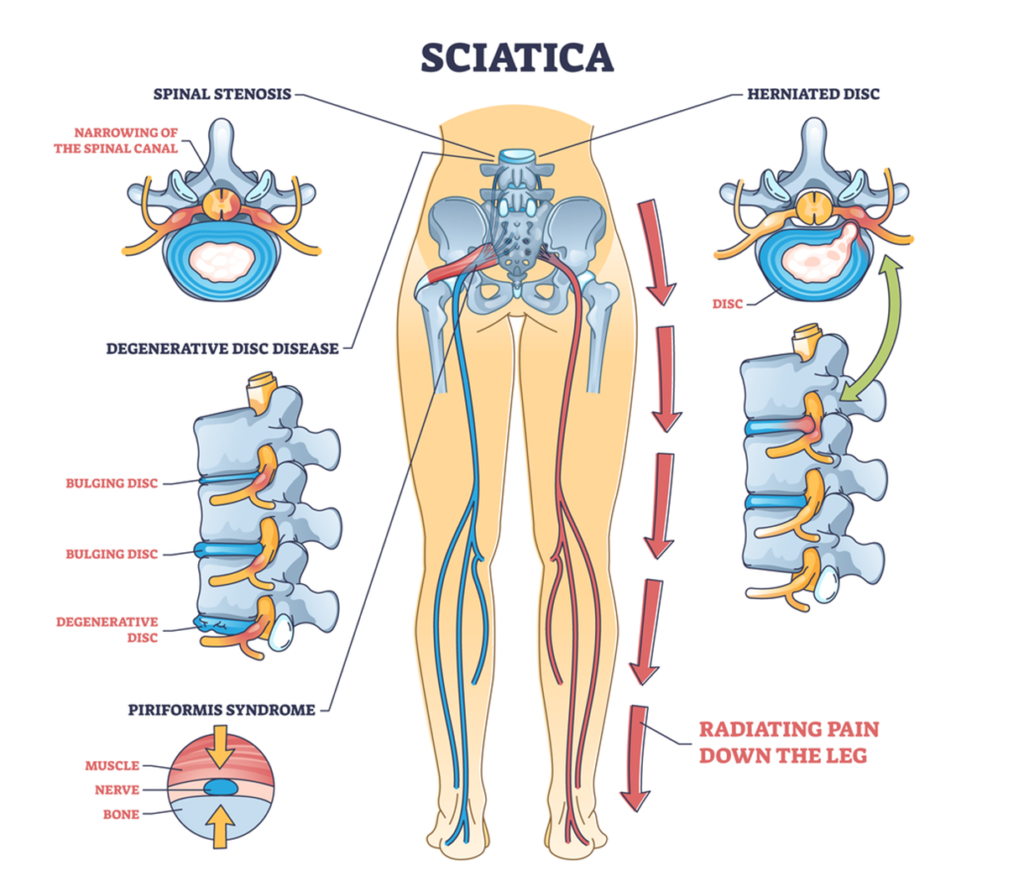Sciatica pain affects millions of people worldwide, causing debilitating discomfort that can significantly impact daily activities and quality of life. As healthcare professionals continue to seek innovative, non-invasive treatment options, CO₂ cryotherapy has emerged as a promising therapeutic modality that offers hope for those suffering from this challenging condition.
Introduction: Understanding Sciatica Pain and the Role of CO₂ Cryotherapy
The intersection of advanced cryotherapy technology and sciatica pain management represents an exciting frontier in modern healthcare. This innovative approach combines the proven benefits of targeted cold therapy with the precision and efficiency of carbon dioxide delivery systems, creating new possibilities for pain relief and functional restoration.
What is Sciatica Pain?
Sciatica refers to pain that radiates along the path of the sciatic nerve, which extends from the lower back through the hips, buttocks, and down each leg. This condition typically affects only one side of the body and can range from mild discomfort to excruciating pain that makes movement difficult. The sciatic nerve, being the largest nerve in the human body, originates from nerve roots in the lumbar and sacral spine (L4-S3) and can be affected by various pathological conditions. Sciatica pain often presents as sharp, shooting sensations accompanied by numbness, tingling, or muscle weakness in the affected leg. The pain intensity can vary significantly, with some patients experiencing constant discomfort while others face intermittent episodes triggered by specific movements or activities.
Como funciona a crioterapia com CO₂
CO₂ cryotherapy utilizes pressurized carbon dioxide gas to deliver precisely controlled cold therapy to targeted tissue areas. When CO₂ is rapidly expelled from a pressurized container, it undergoes adiabatic expansion, creating extremely cold temperatures that can reach -78°C (-108°F) at the point of application. The therapeutic mechanism involves creating a controlled “thermal shock” response that triggers immediate physiological changes in the treated area. Treatment applications typically last 10-15 seconds per targeted region, allowing for precise control over the depth and duration of cold exposure. This targeted approach enables practitioners to focus specifically on inflamed nerve pathways and surrounding tissues without affecting larger body areas unnecessarily.
The Science Behind Sciatica Pain and CO₂ Cryotherapy
Understanding the pathophysiology of sciatica and the therapeutic mechanisms of CO₂ cryotherapy provides crucial insight into why this treatment approach shows promise for managing this challenging condition. The scientific foundation supporting cryotherapy applications continues to expand as researchers investigate its effects on nerve function, inflammation, and pain perception.
Understanding the Causes of Sciatica Pain
Sciatica pain typically results from compression, irritation, or inflammation of the sciatic nerve or its contributing nerve roots. Common etiologies include herniated or bulging intervertebral discs, spinal stenosis, piriformis syndrome, spondylolisthesis, and degenerative disc disease affecting the lumbosacral region. Inflammatory processes play a central role in sciatica pathogenesis, with pro-inflammatory cytokines such as tumor necrosis factor-alpha (TNF-α), interleukin-1β (IL-1β), and prostaglandin E2 contributing to nerve sensitization and pain amplification. These inflammatory mediators increase nociceptor sensitivity, promote edema formation, and perpetuate the pain cycle. Additionally, mechanical compression of nerve roots can compromise vascular supply, leading to ischemia and further inflammatory responses that exacerbate symptoms.

How CO₂ Cryotherapy Targets Inflammation and Nerve Pain
CO₂ cryotherapy addresses sciatica pain through multiple therapeutic mechanisms that directly target the underlying pathophysiology. The mechanism behind this pain reduction is thought to occur through the reduction of inflammation and edema, oxidative stress, and nerve conduction velocity in pain fibers. The extreme cold temperature achieved through CO₂ application causes immediate vasoconstriction, reducing local blood flow and limiting the delivery of inflammatory mediators to the affected area. This vasoconstriction helps decrease tissue edema and reduces pressure on compressed nerve structures. Following the initial vasoconstriction phase, reactive vasodilation occurs, promoting enhanced circulation and facilitating the removal of inflammatory metabolites. The cold application also reduces cellular metabolism, decreasing the production and release of inflammatory substances that contribute to nerve sensitization and pain perception.
The Role of Cryotherapy in Reducing Nerve Compression
Nerve compression relief represents one of the most significant potential benefits of CO₂ cryotherapy for sciatica management. The anti-inflammatory effects of cold therapy help reduce tissue swelling and edema that often contribute to nerve impingement in the spinal canal, intervertebral foramina, or peripheral nerve pathways. Ice is believed to control pain by instigating local anaesthesia. It also decreases oedema, nerve conduction velocities, cellular metabolism, and local blood flow. By reducing edema formation around nerve roots and surrounding soft tissues, cryotherapy can help restore normal anatomical relationships and reduce mechanical pressure on neural structures. Additionally, the muscle relaxation effects of cold therapy help alleviate muscle spasms that may contribute to nerve compression, particularly in conditions like piriformis syndrome where muscle tension directly affects nerve function.
Cryotherapy’s Influence on Blood Flow and Nerve Healing
The vascular effects of Crioterapia com CO₂ create a complex physiological response that promotes nerve healing and functional recovery. The CO₂ cryotherapy machine utilizes pressurized CO2 gas to target a specific area of the body, inducing “thermal shock.” This abrupt temperature decrease triggers the body’s healing response, leading to muscle relaxation, increased blood and nutrient circulation, and pain reduction. The biphasic vascular response involves initial vasoconstriction followed by prolonged reactive hyperemia that enhances nutrient and oxygen delivery to compromised neural tissues. This improved circulation supports cellular repair mechanisms, promotes the clearance of inflammatory metabolites, and enhances the delivery of healing factors to damaged nerve structures. The enhanced blood flow also facilitates the removal of pain-producing substances and metabolic waste products that accumulate in areas of nerve inflammation and dysfunction.
Benefits of CO₂ Cryotherapy for Sciatica Treatment
The therapeutic advantages of CO₂ cryotherapy in sciatica management extend beyond simple pain relief, encompassing multiple physiological benefits that address both immediate symptoms and underlying pathological processes. These comprehensive benefits make CO₂ cryotherapy an attractive treatment option for patients seeking effective, non-invasive alternatives to conventional therapies.
Immediate Pain Relief and Anti-inflammatory Effects
CO₂ cryotherapy provides rapid onset pain relief through multiple neurophysiological mechanisms that begin during the treatment session. The cold therapy can provide immediate relief in some thanks to reducing pain sensations in nerves, including the sciatic nerve. Additionally, inflammation reduction can help reduce discomfort and might even assist with the underlying cause of sciatica in the first place. The analgesic effects result from decreased nerve conduction velocity in pain-transmitting A-delta and C-fibers, effectively interrupting pain signal transmission to the central nervous system. Cold-induced anesthesia occurs through the inhibition of sodium channel function and reduced membrane excitability in nociceptive neurons. The anti-inflammatory effects manifest through decreased production of inflammatory mediators, reduced cellular metabolism, and limited inflammatory cell infiltration into the affected tissues.
Non-invasive and Drug-free Treatment Option
One of the most significant advantages of CO₂ cryotherapy is its non-invasive nature, eliminating the risks associated with surgical interventions or the side effects commonly encountered with pharmaceutical pain management approaches. Overall, evidence suggests that both non-local and local cryotherapy can be considered low-risk and easy treatment options to add in the management of chronic pain in carefully selected patients. The treatment requires no incisions, injections, or systemic medications, making it suitable for patients who cannot tolerate or prefer to avoid conventional medical interventions. This approach is particularly beneficial for individuals with multiple comorbidities, medication allergies, or those seeking complementary treatment options. The absence of systemic effects means that CO₂ cryotherapy can be safely combined with other therapeutic modalities without concerns about drug interactions or cumulative side effects.
Improved Mobility and Flexibility
CO₂ cryotherapy’s ability to reduce pain and inflammation often translates into immediate improvements in mobility and functional capacity. The reduction in muscle guarding and protective spasms allows for increased range of motion and decreased movement-related pain that commonly accompanies sciatica. Many patients report improved ability to perform daily activities, reduced stiffness, and enhanced functional movement patterns following cryotherapy sessions. The muscle relaxation effects help restore normal movement patterns and reduce compensatory behaviors that can perpetuate pain and dysfunction. Improved mobility also facilitates participation in rehabilitation exercises and physical therapy programs that are essential for long-term recovery and prevention of recurrence.
Long-term Benefits for Chronic Sciatica Pain
While CO₂ cryotherapy provides immediate symptom relief, regular treatment sessions may offer cumulative benefits for chronic sciatica management. Lloyd et al demonstrated a significant reduction in intractable pain for 52 of 64 patients treated with cryoanalgesia, including sciatic, intercostal, and facial nerve treatments. The median duration of pain relief was 11 days, with some patients having significant pain relief. The long-term benefits may result from the modulation of central pain processing mechanisms, reduced inflammation-induced nerve sensitization, and improved tissue healing responses. Regular cryotherapy sessions may help break the cycle of chronic inflammation and pain amplification that characterizes persistent sciatica. Additionally, the improved mobility and function achieved through cryotherapy can facilitate participation in exercise and rehabilitation programs that provide lasting benefits for spine health and pain management.
Optimizing Your Sciatica Treatment with CO₂ Cryotherapy
Maximizing the therapeutic benefits of CO₂ cryotherapy for sciatica requires careful consideration of treatment protocols, individual patient factors, and integration with complementary therapeutic approaches. Understanding how to optimize treatment parameters and frequency helps ensure the best possible outcomes for each patient’s unique presentation.
How Often Should You Receive CO₂ Cryotherapy for Sciatica?
Treatment frequency for CO₂ cryotherapy in sciatica management varies based on symptom severity, chronicity, and individual response patterns. Acute sciatica episodes may benefit from daily treatments for the first 3-5 days, followed by every other day sessions as symptoms improve and function is restored. Chronic sciatica conditions typically require a different approach, with initial treatments 2-3 times per week for 2-4 weeks, followed by maintenance sessions once or twice weekly as needed. Ice therapy is particularly useful in acute pain, a flare-up of chronic pain, and/or activity or exercise-induced pain. The duration of each treatment session remains consistent at 10-15 seconds per targeted area to ensure optimal therapeutic benefit while avoiding tissue damage from excessive cold exposure.
Tailoring CO₂ Cryotherapy to Your Specific Sciatica Condition
Individualized treatment approaches are essential for optimizing CO₂ cryotherapy outcomes in sciatica management. The specific anatomical location of nerve compression, underlying pathology, and patient characteristics all influence treatment parameter selection and targeting strategies for maximum therapeutic benefit. For lumbar disc herniation-related sciatica, treatment focuses on the lower back region and affected nerve root levels, while piriformis syndrome may require targeting of the gluteal and hip regions. Patients with spinal stenosis may benefit from broader application areas along the lumbar spine and affected nerve pathways. Treatment intensity and duration may need adjustment based on patient tolerance, skin sensitivity, and previous response to cold therapy applications.
O que esperar durante uma sessão de crioterapia com CO₂
CO₂ cryotherapy sessions for sciatica treatment are typically brief and well-tolerated by most patients. The procedure begins with patient positioning to expose the treatment area and ensure comfortable access to the affected nerve pathways and surrounding tissues for optimal therapeutic targeting. The CO₂ delivery system applies controlled cold therapy to specific anatomical locations for 10-15 seconds per area, creating an intense but brief cold sensation. Patients may experience immediate numbness or tingling in the treated area, often accompanied by rapid pain relief that can begin during the treatment session. Post-treatment, patients may notice continued pain relief, improved mobility, and reduced muscle tension that can persist for several hours to days depending on individual response patterns.
Scientific Evidence Supporting CO₂ Cryotherapy for Sciatica Pain
The growing body of research supporting cryotherapy applications in pain management provides a solid foundation for understanding its potential benefits in sciatica treatment. While specific studies on CO₂ cryotherapy for sciatica are limited, the broader research on cryotherapy and nerve pain offers valuable insights into its therapeutic mechanisms and clinical effectiveness.
Clinical Studies and Research Findings
Research examining cryotherapy’s effects on nerve pain and inflammatory conditions demonstrates significant therapeutic potential for sciatica management. The study encompassed 118 subjects, revealing significant pain alleviation, with Visual Analog Scale scores plummeting from 9.0 initially to 2.0 after treatment. This dramatic pain reduction in chronic low back pain patients suggests similar potential benefits for sciatica sufferers. Cryotherapy has been accepted for … could be due to many mechanisms including altered nerve conduction velocity (NCV), inhibition of nociceptors, a reduction in muscle spasms and/or a reduction in metabolic enzyme activity levels. These multiple mechanisms of action provide a scientific rationale for cryotherapy’s effectiveness in treating nerve-related pain conditions like sciatica. Studies investigating nerve conduction changes following cryotherapy application demonstrate measurable alterations in pain fiber function that correlate with clinical pain relief.
Opiniões de especialistas e depoimentos
Healthcare professionals specializing in pain management increasingly recognize cryotherapy’s potential as an adjunctive treatment for various chronic pain conditions, including sciatica. Expert opinions emphasize the importance of proper patient selection, appropriate treatment protocols, and integration with comprehensive pain management strategies for optimal outcomes. Clinical experience suggests that patients with acute sciatica exacerbations often respond favorably to cryotherapy interventions, with many reporting immediate pain relief and improved function. Chronic sciatica patients may require longer treatment courses but often experience meaningful improvements in pain intensity, sleep quality, and daily functioning. Healthcare providers note that cryotherapy’s excellent safety profile makes it an attractive option for patients seeking alternatives to medications or more invasive procedures.

Potential Risks and Considerations with CO₂ Cryotherapy for Sciatica
While CO₂ cryotherapy presents an excellent safety profile for most patients, understanding potential risks and contraindications ensures appropriate patient selection and optimal treatment outcomes. Proper risk assessment and patient education are essential components of successful cryotherapy programs for sciatica management.
Há algum efeito colateral?
CO₂ cryotherapy side effects are generally minimal and transient when proper protocols are followed. Most commonly reported adverse effects include temporary skin redness, numbness at the treatment site, and occasionally, mild skin irritation that resolves within a few hours of treatment completion. Some patients may experience temporary increased stiffness immediately following treatment, which typically resolves within 24 hours as the therapeutic effects take hold. Rarely, patients with extreme cold sensitivity may develop localized skin reactions or experience discomfort during treatment application. These reactions are generally mild and self-limiting, resolving without intervention once the skin returns to normal temperature.
Who Should Avoid CO₂ Cryotherapy for Sciatica?
Certain medical conditions and patient characteristics may contraindicate CO₂ cryotherapy treatment for sciatica. Absolute contraindications include cold urticaria, cryoglobulinemia, Raynaud’s disease, and severe peripheral vascular disease that compromises circulation to the treatment area, as these conditions increase the risk of adverse reactions to cold exposure. Relative contraindications require careful consideration and may include diabetes with peripheral neuropathy, pregnancy (particularly over the abdominal and pelvic regions), active infections at the treatment site, and malignancy in or near the treatment area. Patients taking certain medications that affect circulation or temperature regulation may require modified protocols or alternative treatment approaches. Age extremes (very young or elderly patients) may also require special considerations and modified treatment parameters.
Managing Expectations: When to See Results
Setting realistic expectations for CO₂ cryotherapy outcomes helps ensure patient satisfaction and treatment compliance. Many patients experience some degree of pain relief immediately following treatment, with optimal benefits typically developing over 24-48 hours as inflammatory processes subside and tissue healing accelerates. Acute sciatica episodes often respond more rapidly to cryotherapy interventions, with significant improvement possible within the first few treatment sessions. Chronic sciatica conditions may require more extended treatment courses, with gradual improvement over 2-4 weeks of regular sessions. Individual response patterns vary significantly, and some patients may experience temporary symptom fluctuations before achieving stable improvement. Clear communication about expected timelines and realistic outcomes helps maintain patient engagement and treatment adherence.
Conclusion: Is CO₂ Cryotherapy the Right Treatment for Your Sciatica Pain?
The decision to incorporate CO₂ cryotherapy into your sciatica management plan should be based on careful consideration of your individual symptoms, treatment goals, and overall health status. This innovative therapeutic approach offers unique advantages that make it particularly suitable for certain patients and clinical presentations.
Recap: Why CO₂ Cryotherapy is an Effective Solution for Sciatica Pain
Crioterapia com CO₂ addresses sciatica pain through multiple complementary mechanisms that target both immediate symptoms and underlying pathophysiological processes. The combination of rapid pain relief, anti-inflammatory effects, improved circulation, and muscle relaxation creates a comprehensive therapeutic response that can significantly improve patient comfort and function. The precision and control offered by CO₂ delivery systems allow for targeted treatment of specific anatomical regions while minimizing systemic effects and treatment time requirements. The excellent safety profile and minimal contraindications make this approach suitable for a broad range of patients, including those who cannot tolerate or prefer to avoid conventional medical interventions. The non-invasive nature eliminates surgical risks while providing meaningful therapeutic benefits.
Final Thoughts on Incorporating CO₂ Cryotherapy into Your Sciatica Management Plan
CO₂ cryotherapy is a valuable addition to sciatica management, offering immediate symptom relief and potential long-term benefits for chronic pain. When combined with physical therapy, exercise, and lifestyle changes, it provides enhanced outcomes. However, success relies on appropriate patient selection, proper protocols, and realistic expectations. Working with experienced healthcare providers ensures optimal treatment planning and results. The growing research on cryotherapy’s effectiveness, alongside advancing technology, solidifies its role as a safe, non-invasive option for sciatica pain. Discussing this treatment with your healthcare provider can help determine if it aligns with your needs and goals, offering significant pain relief and improving quality of life for those struggling with sciatica.



